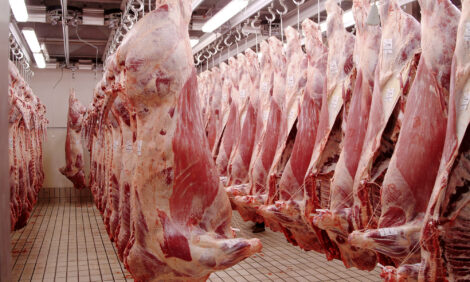



Record Sales for US Farm Cooperatives
US - Farmer, rancher and fishery cooperatives posted record sales and income in 2011, surpassing the previous record sales year of 2008 by $10 billion while besting the old income record by $500 million.Dallas Tonsager, under secretary for Rural Development, made the announcement on the Secretary's behalf, kicking-off National Cooperative Month. Tonsager said co-op employment levels remained strong, with cooperatives employing 184,000 full-time, part-time and seasonal workers, up slightly from 2010.
"These new cooperative sales and income records for 2011 underscore the strength and productivity of the nation's farmer- and rancher-owned cooperatives, and the vital role they play in the nation's economy," said Mr Tonsager. "Primarily because of mergers, the number of farm co-ops continued to decline, but memberships and asset values are up."
Net income before taxes for all agricultural co-ops was a record $5.4 billion, eclipsing the previous high of $4.9 billion, set in 2008. Net income was up more than 25 per cent, or $1 billion, from 2010.
The year also saw double-digit increases in prices for dairy products, cotton, livestock and grains and oilseeds. Farm production expenses also increased by double-digits in 2011, with feed, fertilizer and fuel prices leading the upward trend. The 2,285 surveyed cooperatives had sales of $213 billion, exceeding 2010 sales by more than $40 billion.
Top 100 Ag co-ops
USDA's annual list of the nation's 100 largest agricultural cooperatives, also released today, shows that they also had record sales and income in 2011. The 100 largest ag co-ops reported revenue of $148 billion in 2011, an increase of almost 30 percent over 2010, when revenue totaled $113 billion. Net income for the 100 top co-ops was $3.17 billion, up from $2.35 billion in 2010. The previous top 100 co-op records were $130 billion for sales and $2.42 billion for income, both marks set in 2008.
CHS Inc., Saint Paul, Minnesota – an energy, farm supply, grain and food co-op – was once again the nation's largest ag co-op, with $36.9 billion in revenue in 2011. It was followed by Dairy Farmers of America, Kansas City, Missouri; with $12.9 billion in revenue. It traded places from 2010 with third-ranked Land O' Lakes Inc., St. Paul, Minnesota, a dairy, food and farm supply co-op, with $12.8 billion in revenue in 2011.
Iowa is home to 14 of the top 100 ag co-ops, the most of any state. It is followed by Minnesota with 13, Nebraska with 10, California with 6 and Wisconsin with 5. The biggest gains on the list were made by cotton cooperatives, due primarily to sharply higher cotton prices in 2011. Carolinas Cotton Growers Cooperative, Garner, North Carolina, made the largest jump, rising from 129 in 2010 to 71 on the 2011 list. It was followed by Calcot Ltd., Bakersfield, California, which climbed from 131 in 2010 to 85 in 2011. The next eight biggest gainers on the list were all grain or mixed (grain and farm supply) co-ops, due largely to high grain prices.
Most Ag co-op sectors see gains
Looking at the entire ag co-op sector, grain and oilseed sales by cooperatives climbed by almost $14 billion in 2011, while dairy product marketing increased by $8 billion. Cotton sales increased more than $1.5 billion while livestock and sugar sales both gained more than $600 million. Sales of farm supplies increased by $10 billion, primarily due to increasing energy prices. Farm supply co-ops recorded gains of more than $3 billion for petroleum products, while sales were up by $1 billion for fertilizer, feed and crop protectants.
Marketing of food, fiber, renewable fuels and farm supplies by cooperatives experienced 24 per cent increases over the previous year, according to the annual survey conducted by the Cooperative Programs office of USDA Rural Development. Gross business volume of $213 billion was the largest ever, as was net income before taxes.
Farmer, rancher and fishery cooperatives remain one of the largest employers in many rural communities and also provide jobs in many cities. The total farm co-op workforce of 184,000 was up slightly from 2010. While full-time jobs at co-ops increased by 1,800, the number of part-time and seasonal employees declined by 1,600.
There was a continued downward trend in farm numbers, with USDA counting 2.2 million farms in 2011, down about 10,000 from 2010. The number of farmer cooperatives continues to decline; there are now 2,285 farmer, rancher and fishery cooperatives, down from 2,314 in 2010. Mergers account for most of the drop, resulting in larger cooperatives.






